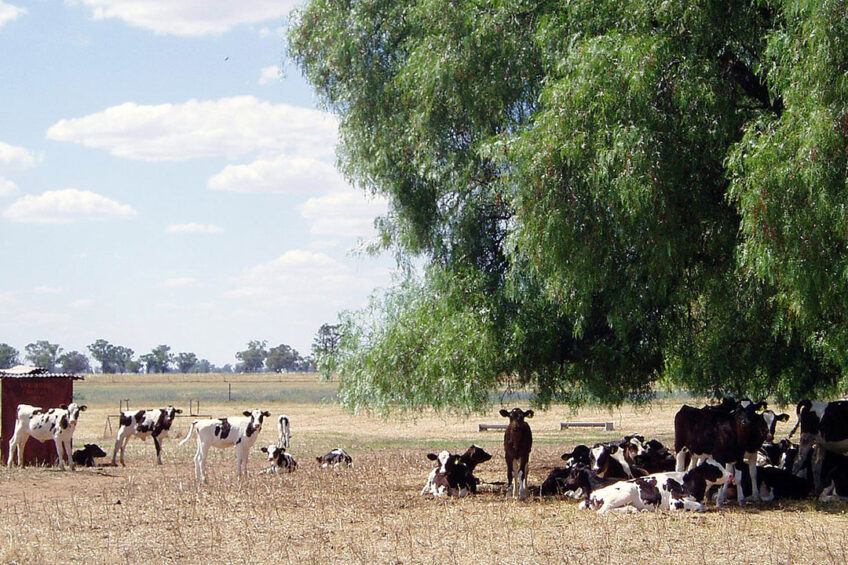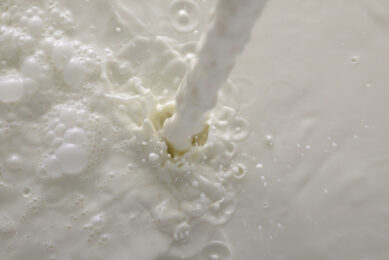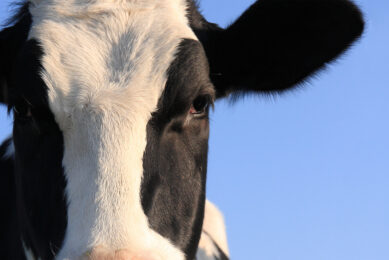Farm report, Australia: A dairy farm dealing with drought

As more dairy farmers in Australia leave the industry demand is starting to outstrip supply, and prices are moving upwards meaning a better return for those remaining. However, farmers need a constant supply of water which can prove difficult. In Australia drought conditions and water rights can be major barriers, as this farm is experiencing.
Together with their son Shane, Graeme and Heather Spunner run 330 cows on their farm located at Berrigan in New South Wales, less than 40 km from Cobram on the Murray River.
The Spunners moved to their current farm in 1973 from Labertouche in Gippsland, Victoria, where they also ran a dairy farm. Over the years they have bought land adding to the original 280 hectares to its current size of 441 hectares.

Heather says, “When we arrived there was a small walk through dairy here which we immediately converted to a 10 unit swing over herringbone and used for nearly 30 years.
“In 2001 we built a new 50 stand rotary dairy and increased the cow numbers to a maximum of 330 cows.
PROFILE Name: Graeme and Heather Spunner Name: Graeme and Heather SpunnerDairy cows: 330 cows Location: Berrigan, New South Wales. The Spunners moved to their current farm in 1973 from Labertouche in Gippsland, Victoria, where they also ran a dairy farm. Breeding: The farm makes use of 8 bulls which are sourced from the best herds, they do not make use of AI. Milk: Cows average 10,500 litres with 4.04% butterfat and 3.2% protein. |
“During that time we were pasture based and did not feed bales. We grew summer pasture, which was supplemented with hay and silage during late summer and autumn, and winter pasture which was also made into hay and silage.
“When the drought hit in 2007, we had to rethink our methods and purchased a mixer wagon. We stopped growing summer pasture and went to a total mixed ration from December to May.

“We made moveable troughs to feed the cows in, which are moved from paddock to paddock every few weeks during that time,” she adds.
Graeme is 76 and Heather 68 so they rely on son Shane and one full time worker to help out with running the farm. Shane looks after all the paddock work and the others look after the herd.
Breeding
Preferring to use bulls rather than AI, the Spunners have bred the current top producing cow in Australia.
Heather adds, “Our cows are registered Holsteins and we rear around 150 heifers each year. We keep all heifer calves until after their first lactation and then cull the ones that don’t make the cut.
“We are one of the very few herds that don’t use AI and generally have about eight bulls on hand which we source from the best herds around. When they mature they take four week turns with the milking herd and, given that our Sharett Park Natalia Lulu is the current top producing Holstein cow and fifth highest ever in Australia, we must be doing something right.
“We purchased the great grand dam of Natalia Lulu from Max Hardes who bred Ladino Park Talent. We rarely purchase cows, but he was selling his herd and it was an opportunity too good to pass up.

“Natalia Lulu, two times excellent, produced 21,229 litres and 1,133kgs of solids in 305 days on her third lactation. We are now using her son in the herd and her great grand dam, Ladino Park Crew Lulu, is also still in the herd at the age of 17.
“Our cows average 10,500 litres with 4.04% butterfat and 3.2% protein. When we became Master Breeders in 2018 our cows had 1,024 production awards and 26 lifetime awards. These are awarded by the Holstein Association based on official herd test figures and there are more now.
Calving and drying off
“We calve all year round, drying off roughly 20 cows each month with about the same number calving each month. The heifers calve in groups of between 10 and 20 probably about four or five times a year.
“Cows are milked as one group, twice a day. They are always out in the paddock and are only in a shed when it is very hot over 35 degrees. It is a shade shed with a roof but no walls,” she says.
As for new technology the Spunners installed standalone milk meters a few years ago and find them really useful for young heifers. “They are also good for herd testing as we send in a seven day average file for the herd and only need a small sample for the butterfat, protein and cell count. We also purchased pedometers a few years ago and that has made the recording of matings much more accurate.”
Their milk has been sent to Australian Consolidated Milk (ACM) for the past 10 years and is currently averaging $7.09 (£3.52) per kg of milk solids for the year.
Water a real issue
Sourcing water for the farm and cows has become a real issue for the Spunners as obtaining water rights are a real battle in Australia.

Heather adds, “We are fortunate in that we don’t live in a flood or bushfire prone area. The reason we moved here all those years ago was to drought proof the farm with irrigation. However, that worked well until recently. The drought we are experiencing in the Riverina is caused more by bureaucratic bungling than lack of rain.
“We have had no allocation of water at all in the past two seasons and next season is not looking any better. All our water is sent to South Australia to fill up a lake. Because of this manmade drought, we sold about 120 of our replacement heifers to China in 2018 and another 50 in 2019. We have also culled the milking herd fairly heavily as we couldn’t feed all of them with no water to grow pasture.”
Heather continues, “We have had to borrow money to buy the neighbours’ failed crops which were made into hay and silage, to feed the remaining herd.
“We are therefore well down in stock numbers and it will take several good years to rebuild. With this ongoing problem of no water, we cannot make any long term plans. We just do our best to survive each year and hope the next one will be better.”
Join 13,000+ subscribers
Subscribe to our newsletter to stay updated about all the need-to-know content in the dairy sector, two times a week.










